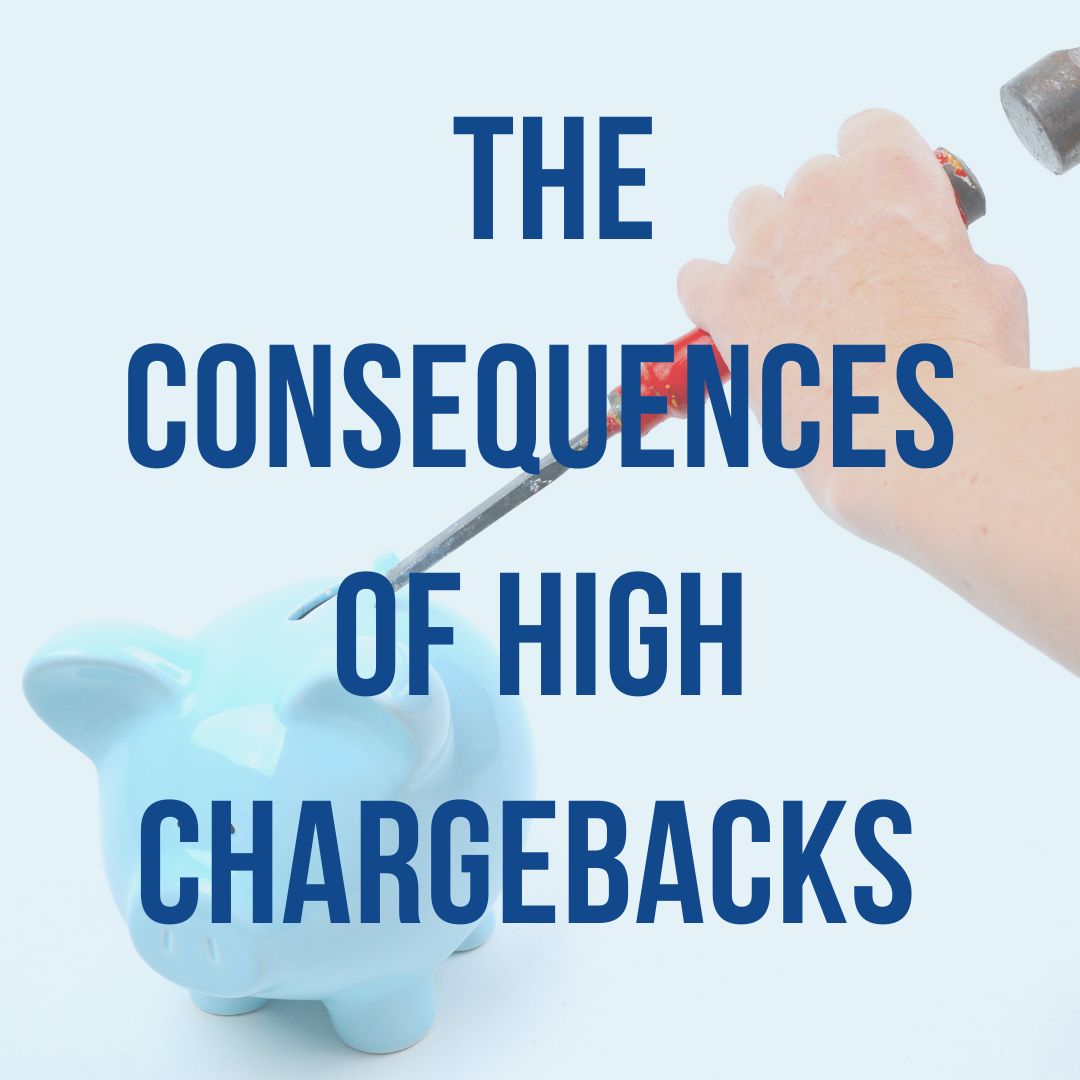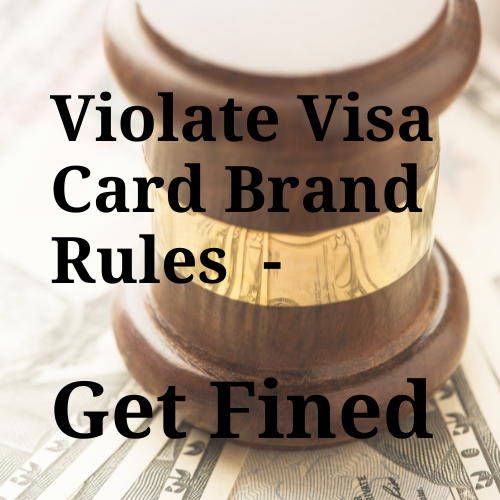
Understanding credit card processing fees and how they work can be confusing, especially if you're not in the industry. It’s just as difficult to read and understand your credit card processing statement, so you can make sense of all those fees.
The credit card processing industry is made up of a web of banks, financial services, networks, software companies and consumers. For every payment transaction completed, there are a half dozen players involved. And you better believe that each one of them wants to charge you for their services.
Unfortunately, this leads merchants to become more and more frustrated with their credit card processing. They don't know why their rates go up and can't understand the statement enough to figure it out. To top it off, most merchants don't realize they do have some control over their rates. The truth is, they can often lower their costs if they understand their fees and how to read the statement. That’s because many fees are in fact negotiable.
It's no wonder merchants always feel like they're getting the run-around by their credit card processor.
It's in the merchant’s best interest to learn to read their credit card statement.
Most business owners don't have time to learn about and understand their merchant services fees, and it's not their job. But, at the same time, you're paying for the service, and it is your statement. So you have every right to know how to read it.
Once you understand what you're paying for, and how much you're paying for it, you will have much more confidence in your processor. And you’ll be able to determine when you’re getting the best merchant account rates for your business. And if you can't, then it's time to change processors! Then you can relax and get back to doing what you do best, running your business.
So with that in mind, this 2-part article aims to help you understand who is charging you what, and how to read your statement.
In part one, we’ll summarize the entities involved with processing credit card transactions. We’ll cover which fees go to each party. We’ll talk about why statements are so convoluted. And we’ll show you how to see if you're paying a competitive overall rate, even if you can't yet read your statement line by line.
In part two, we’ll go over the three most common pricing structures and how to find out which one you have. Then we’ll show you how to differentiate between the fees you have some control over and the ones you don’t. And we’ll teach you how to weed out the base costs and calculate your effective mark-up, so you know if you're getting the rate you were quoted.
Once you understand the basics about how most processors offer merchant services, we’ll talk about why we're different. Because at MonerePay, we don't take on payment processing quite the same way it has been done for the last few decades. To truly understand how our merchant services benefit you, you need to understand what most processors are offering.
Why are credit card processing statements so hard to understand?%20(1).jpg?width=523&name=82070338_s%20(1)%20(1).jpg)
Many, many reasons. Maybe it’s because of the complex pricing models that differ between processors. Maybe it’s the varying statement structures provided by each processor or acquirer. Or maybe it’s due to the vague descriptions and hidden fees snuck in there by your salesperson. Most likely, it's all the above.
- Complex pricing models make it really hard for merchants to know if they're getting the best rate.
- The statements themselves are confusing, making it even harder to decipher the pricing and the fees.
- Statements often include vague descriptors that don't readily tell what a fee is for.
- And finally, oftentimes, extra fees are hidden within other rates and charges to purposely obscure them.
- There are several major processors in the industry, and they all present their statements a little differently.
With a lot of companies, the salesperson’s job is to obscure the true costs and hidden fees that might be added to the low rate they quoted you. So you can't rely on them to explain your statement plainly. It's a Catch 22, right? Your provider is the one who created the rates you're paying on your statement, yet you can't trust them to explain it to you.
There are providers out there with integrity, though. We like to think we are one of them. We continue to advocate for truth and transparency in credit card processing. Not only that, but we are dedicated to bringing integrity back to an industry with a checkered past. And there are many merchant service providers like us trying to change the view of the industry.
Understanding the components that make up your credit card processing fees.
With this in mind, it's a good idea to learn at least some basics about how to read your statement. This way you can understand which fees are the base cost (wholesale), that is the same for everyone, and which fees are the mark-up by the processor. This will empower you to have more control over the rates your provider is charging you.
But before we learn how to read the statement, we need to get a basic understanding of the players involved. These entities are the source of your credit card processing fees. The fees that make up your processing costs are assessed by the different parties involved in credit card processing transactions.
There are fees that go to the card issuing banks (think Chase, Wells Fargo). Fees that go to the credit card companies or card brand (think Visa, MasterCard). There are gateway fees. And there’s the “mark-up”, the fees that go to your processor for providing merchant services.
Let's go over each of them.
Card Brand Network:
Visa, MasterCard, American Express, and Discover are the major card brands. They are members of the Card Brand Association and creators of the Card Brand Network. The Network is the electronic network over which all transactions are processed. We refer to this network as “interchange”. The Association is responsible for setting the wholesale interchange rates. These are the base rates and are the same for everyone using the network to process card payments. They impose card association fees and assessments for providing you with the network to process payment transactions over. Their association fees and assessments are non-negotiable.
Card Issuing Banks:
These are the financial institutions that issue debit and credit cards to consumers. Some of the most common card issuers include Chase, Capital One, Bank of America, and Citibank. While it is the card brand that sets the rate for each type of credit card issued, it is the issuing bank that charges the interchange fees. Interchange fees are non-negotiable.
So, the Interchange rates are a combination of the fees and assessments charged by the credit card companies and the card-issuing banks. These make up the wholesale rates and are the base of all credit card processing. These rates are not negotiable and they are the same for every processor. In the processing industry, these wholesale costs are called “Interchange”. There are hundreds of categories, each with their own fee for interchange, that apply to every single card type on the market.
Acquiring Bank or Processor:
This is the bank that provides the business with the merchant bank account to process payments through. They accept and hold all the funds from the authorized transactions. Then they deposit the funds into the merchant’s business account. But not before deducting all the various fees involved with processing the payment transactions.
This is where the “mark-up” portion of your rates comes into play. You will have your base, non-negotiable rates that come with accepting payments, plus the mark-up rate. This rate is split between your Merchant Service Provider and the Acquiring Bank or Processor.
Merchant Service Provider (MSP):
Your merchant service provider is your portal to the merchant account. They are the liaison between you and the acquiring bank. They set up and manage your merchant account with the acquiring bank. The MSP provides you with your credit card processing solutions, technology, and ongoing customer service.
Your MSP will add the “mark-up” to the wholesale interchange fees, as well as some common fees and assessments. This combines to make up your entire credit card processing rates. They are responsible for providing you with your merchant account statements. The MSP keeps a portion of the total mark-up (the rest goes to the acquiring bank) in exchange for their services. Most of the fees that make up this portion of your costs are negotiable.
Gateway:
There may also be fees for the use of a gateway. Retail locations capture credit card information by dipping the card into the terminal. eCommerce stores and businesses that use a POS system will use a gateway to capture the payment data. The payment gateway taps into the network and securely transmits the transaction data to the processor. Most of the time, a reputable merchant service provider will simply pass this cost to you. This is a non-negotiable fee. However, be aware that some merchant service providers will tack a mark-up onto the gateway fees. In that case, you should be able to ask for it to be removed.

With so many charges, fees and assessments, how am I to know if my rate is competitive?
Now you understand that some of your fees are non-negotiable, and are the founding cost of accepting credit and debit card payments. And there are also negotiable mark-up costs that you have more control over. This is the part of your processing costs that determines whether you are paying a competitive rate.
In addition to learning to read your statement, and probably one of the most important skills, is learning how to calculate your “effective rate”. Even if you're not ready to dissect your statement line by line, there is a way to see if your rate is an overall competitive rate. Merchants can do this by calculating their “effective” rate.
What is an “Effective Rate”? And how do you find it?
The effective rate gives you the true and total cost of your credit card processing. It's the only way to know if your rates are truly competitive. It doesn't do you any good to have a great rate on your processing fees if the additional fees and assessments drive the costs through the roof. One processor could give you an incredibly low rate, but hit you with large fees and assessments. Another could have a slightly higher rate, but very low (or absent) fees and assessments. When you calculate the effective rate, it might be almost the same. It's just a matter of where the fees are going.
This is also the reason we will learn to understand the line-by-line costs in How To Read Your Credit Card Processing Statement - Part 2. Once you calculate your effective rate you'll be able to tell if you have a competitive rate and if it is staying consistent month to month. If you see a significant increase in one month or notice a consistent increase each month, then it's time to dive into the details. Then you can go over your statement line by line to see where you might be overpaying.
How to calculate your effective rate.
Luckily, calculating your effective rate is fairly straightforward with this simple calculation:
(Total monthly fees / Total monthly sales) x 100 = Effective Rate
To get your total monthly fees, make sure you include all fees associated with your credit card processing. This will include all processing charges, statement fees, monthly fees, gateway fees if applicable, PCI compliance, and any extra fees (even if you don't know what they're for).
 Understand your pricing structure to slash processing costs.
Understand your pricing structure to slash processing costs.
Join us for Part 2 when we tackle breaking down the common pricing structures used by merchant service providers. We’ll also show you how to determine which pricing structure you’ve been placed on. And we’ll explain why it's sometimes hard to tell what you're being charged.
In the meantime, if you need help to read or understand your statement, please don't hesitate to call. We are always happy to explain our pricing and help you to understand our statement structure.
If you're ready to process payments with the most transparent and competitive rates available, click the button below.

(1).jpg)



